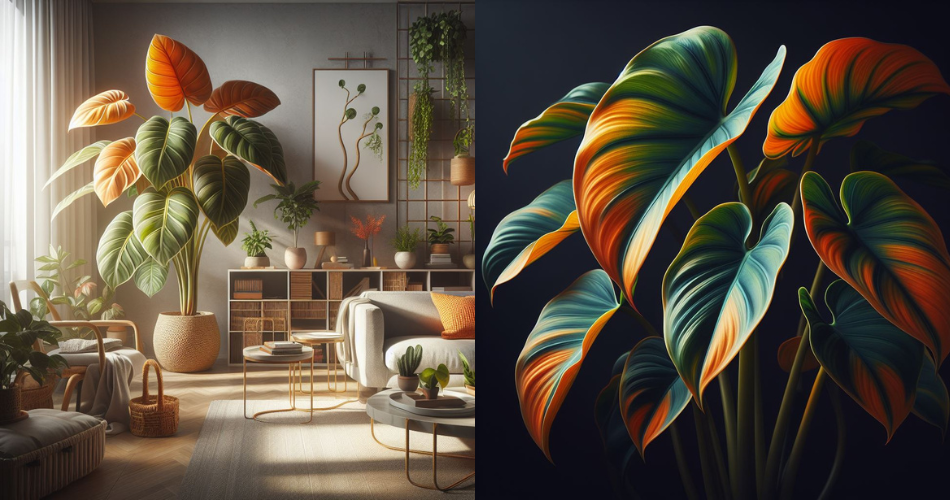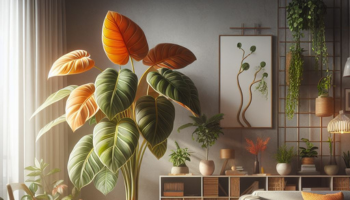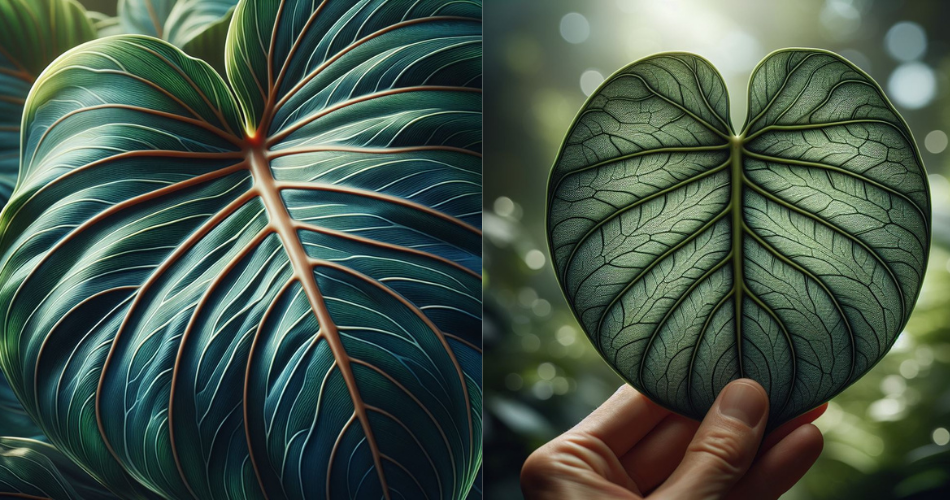
Philodendron Prince of Orange is a captivating and unique plant that has gained popularity among indoor gardening enthusiasts. With its striking foliage and vibrant orange hues, this plant adds a touch of tropical elegance to any space. In this comprehensive care guide, we will explore the distinct characteristics of the Philodendron Prince of Orange, including its leaf structure and color-changing qualities. Additionally, we will delve into the essential care requirements necessary to ensure the health and vitality of this stunning plant. Whether you are a seasoned plant parent or a beginner looking to embark on your indoor gardening journey, this article will provide you with the knowledge and guidance needed to successfully care for your Philodendron Prince of Orange.
1. Introduction to Philodendron Prince of Orange Plant
1.1 What is Philodendron Prince of Orange?
The Philodendron Prince of Orange is a stunning tropical plant known for its vibrant foliage and unique color-changing qualities. With its striking orange leaves, this plant adds a pop of color to any indoor space. It belongs to the philodendron family, which is characterized by its heart-shaped leaves and climbing or trailing growth habit.
1.2 History and Origin of Philodendron Prince of Orange
The Philodendron Prince of Orange is a cultivated hybrid variety that was developed through careful breeding. It originated from the tropical rainforests of South America, where philodendron plants are native. Through selective breeding, horticulturists sought to create a philodendron variety with exceptional coloration and unique characteristics, resulting in the beautiful Prince of Orange we know today.
2. Understanding the Unique Characteristics of Philodendron Prince of Orange
2.1 Foliage and Leaf Structure
The Philodendron Prince of Orange boasts large, heart-shaped leaves that are glossy and leathery in texture. The leaves have a unique color combination, starting with bright coppery-orange when young, gradually transitioning to a deep green as they mature. The vibrant orange hue of the new leaves is what sets this plant apart from other philodendron varieties.
2.2 Color-changing Qualities
One of the most fascinating aspects of the Philodendron Prince of Orange is its ability to change leaf color under different lighting conditions. When exposed to brighter light, the leaves tend to display a more intense shade of orange, while in lower light conditions, the color may shift towards a darker green. This color-changing quality adds to the plant’s visual appeal and makes it a delight to observe.
2.3 Growth Habit and Size
As an indoor plant, the Philodendron Prince of Orange typically grows to a manageable size. Its climbing or trailing growth habit allows it to be displayed in various ways, such as in hanging baskets or trained along a support. In ideal conditions, this philodendron can reach a height of around 2-3 feet, making it a versatile choice for both smaller and larger spaces.
3. Essential Care Requirements for Philodendron Prince of Orange
3.1 Light and Sunlight Needs
The Philodendron Prince of Orange thrives in bright, indirect light. It appreciates a few hours of morning or evening sunlight, but direct sunlight can scorch its leaves. Placing it near a north or east-facing window is often ideal. If the leaves start to lose their vibrant orange color and become pale, it may be an indication that the plant requires more light.
3.2 Temperature Range
This tropical plant enjoys warm temperatures between 65°F and 85°F (18°C – 29°C). It is essential to protect it from harsh drafts and sudden temperature fluctuations. Avoid placing it near doors or vents that could expose it to cold drafts, which can negatively affect its overall health and growth.
3.3 Humidity Levels
As a tropical plant, the Philodendron Prince of Orange thrives in higher humidity levels. It appreciates a humidity range of 50% to 60%. If your home has dry air, you can increase the humidity by using a humidifier or placing the plant on a pebble tray filled with water. Regular misting of the leaves can also help create a more humid microclimate around the plant.
4. Creating the Ideal Growing Environment for Philodendron Prince of Orange
4.1 Choosing the Right Pot and Soil
Select a pot with good drainage to ensure excess water can escape. Well-draining potting soil specifically formulated for tropical plants is ideal for the Philodendron Prince of Orange. Consider adding perlite or coarse sand to the mix to improve drainage further.
4.2 Placement in Your Home
Find a spot in your home where the plant can receive bright, indirect light. Avoid placing it in direct sunlight or in dark corners. The Philodendron Prince of Orange will thrive in areas with consistent temperatures and minimal temperature fluctuations.
4.3 Providing Adequate Air Circulation
Good air circulation is beneficial for the health of your Philodendron Prince of Orange. Avoid placing it in overly crowded or stagnant areas. Gentle airflow, such as from a fan set on low, can help prevent the growth of mold or mildew on the leaves and improve overall plant vigor.
Now that you have a better understanding of the Philodendron Prince of Orange and its care requirements, you can confidently add this eye-catching plant to your indoor jungle. Its unique foliage and easy-going nature make it a delightful addition to any plant collection. Happy growing!Watering and Moisture Management for Philodendron Prince of Orange
5.1 Watering Frequency and Techniques
Caring for your Philodendron Prince of Orange plant involves finding the perfect balance between giving it enough water and not drowning it in the process. These plants enjoy a moderate amount of moisture, so aim to water them when the top inch of soil feels dry to the touch. Remember, it’s better to underwater than overwater, as Philodendrons are more forgiving of dry conditions than soggy ones.
When watering, make sure to do so evenly and thoroughly. Pour water onto the soil until it drains out of the bottom of the pot, ensuring that the entire root system gets a good drink. This helps prevent any dry pockets of soil that could harm your plant’s health.
5.2 Proper Drainage and Avoiding Overwatering
Philodendron Prince of Orange plants appreciate well-draining soil to avoid waterlogged roots. Ensure that your plant’s pot has drainage holes so excess water can escape. If you notice water pooling at the bottom of the pot after watering, it’s a sign that your plant may be sitting in water for too long. Adjust the watering frequency or consider adding a layer of rocks at the bottom of the pot to improve drainage.
5.3 Mist and Moisture Requirements
While Philodendron Prince of Orange plants thrive in moderate humidity levels, they don’t necessarily require misting. However, if the air in your home is particularly dry, misting can provide a little boost of moisture. Use a fine mist spray bottle to lightly spritz the leaves every few days. Just remember not to go overboard — a light misting is all they need to keep their foliage happy.
Fertilizing and Pruning Tips for Philodendron Prince of Orange
6.1 Understanding Nutritional Needs
To keep your Philodendron Prince of Orange plant looking vibrant and healthy, providing it with the right nutrients is crucial. During the growing season, which typically occurs in spring and summer, you’ll want to fertilize your plant once a month. Consider using a balanced, water-soluble fertilizer to ensure your Philodendron gets the necessary nutrients.
6.2 Choosing the Right Fertilizer
When choosing a fertilizer, opt for a well-balanced formula with equal proportions of nitrogen, phosphorus, and potassium, commonly represented by the numbers on the fertilizer package (e.g., 10-10-10). This will provide your Philodendron with a good overall boost.
Alternatively, you can also use a slow-release fertilizer, which provides nutrients to your plant over an extended period. Follow the instructions on the packaging for the appropriate application method and dosage.
6.3 Pruning Techniques for Healthy Growth
Pruning your Philodendron Prince of Orange not only helps control its size but also encourages healthier and bushier growth. If you notice any leggy or unruly stems, feel free to trim them back using a clean pair of pruning shears. You can also pinch off the tips of the plant to encourage branching and a fuller appearance.
When pruning, make sure to remove any dead or yellowing leaves as well. This helps maintain the overall health and appearance of your Philodendron.
Common Pests and Diseases to Watch Out for in Philodendron Prince of Orange
7.1 Identifying and Treating Common Pests
While Philodendron Prince of Orange plants are generally quite resilient, they can occasionally fall victim to common pests. Keep an eye out for unwanted visitors like aphids, mealybugs, and spider mites. These pesky critters can suck the life out of your plant, causing stunted growth and yellowing leaves.
If you spot any pests, treat them promptly with a gentle insecticidal soap or neem oil. Remember to follow the product instructions and repeat the treatment if necessary. Regularly inspecting your plant’s foliage will help catch any unwelcome guests before they become a bigger problem.
7.2 Preventing and Managing Plant Diseases
Although Philodendron Prince of Orange plants are generally hardy, they can still be susceptible to a few common diseases. Overwatering can lead to root rot, while improper air circulation can create a favorable environment for fungal diseases like leaf spot.
To prevent these issues, ensure proper drainage and avoid overwatering your plant. Keep the foliage dry as much as possible, as damp conditions can promote fungal growth. If you notice any signs of disease, such as browning or spotting on the leaves, consider adjusting your watering routine and providing better air circulation. In severe cases, you may need to use a recommended fungicide to address the issue.
Troubleshooting and Maintenance for a Healthy Philodendron Prince of Orange
8.1 Common Issues and How to Solve Them
Despite your best efforts, your Philodendron Prince of Orange may encounter some common issues. If you notice leaves turning yellow, it may be a sign of overwatering. Allow the soil to dry out before watering again, and consider adjusting your watering schedule.
If the leaves are drooping or wilting, it could be a sign of underwatering. Give your plant a thorough drink and ensure it receives enough water in the future.
8.2 Pruning for Maintenance
Regular pruning is not only beneficial for promoting healthy growth but also for maintaining the desired shape and size of your Philodendron Prince of Orange. Trim back any leggy stems or unruly growth to encourage a more compact and attractive appearance.
Remember to use clean pruning shears and avoid removing more than one-third of the plant’s foliage at a time.
With these tips and tricks for watering, fertilizing, pruning, pest control, and troubleshooting, your Philodendron Prince of Orange will thrive and bring a touch of tropical beauty to your space. So go ahead and unleash your inner plant parent — this striking plant is worth the care and attention!In conclusion, the Philodendron Prince of Orange is truly a remarkable plant that can bring a burst of color and beauty to your indoor space. By understanding its unique characteristics and following the proper care guidelines outlined in this article, you can create an ideal environment for your Philodendron to thrive. Whether you’re drawn to its vibrant foliage or its ability to adapt to various light conditions, caring for the Philodendron Prince of Orange can be a rewarding and fulfilling experience. So, go ahead and bring this tropical beauty into your home, and enjoy the joy and tranquility it brings to your indoor oasis.
FAQ
1. How often should I water my Philodendron Prince of Orange?
The watering frequency for Philodendron Prince of Orange will depend on various factors such as the temperature, humidity levels, and the size of the pot. As a general rule, it’s essential to allow the top inch of soil to dry out before watering again. Avoid overwatering as it can lead to root rot, but also ensure that the plant doesn’t become completely dry.
2. Can I place my Philodendron Prince of Orange in direct sunlight?
While Philodendron Prince of Orange prefers bright, indirect light, it can tolerate some direct sunlight. However, prolonged exposure to intense sunlight can scorch the leaves. It’s best to provide filtered or partially shaded sunlight to maintain the plant’s vibrant colors and prevent leaf damage.
3. How often should I fertilize my Philodendron Prince of Orange?
During the active growing season, which typically spans from spring to summer, you can fertilize your Philodendron Prince of Orange once a month using a balanced houseplant fertilizer. However, it’s important to follow the instructions on the fertilizer packaging and avoid over-fertilizing, as this can lead to fertilizer burn and negatively impact the plant’s health.
4. What should I do if I notice pests on my Philodendron Prince of Orange?
If you observe pests such as spider mites, mealybugs, or aphids on your Philodendron Prince of Orange, it’s crucial to take immediate action to prevent their spread. Begin by isolating the affected plant from other houseplants and use an appropriate organic pesticide or insecticidal soap to treat the infestation. Regularly inspect your plant and continue treatment until the pests are eliminated.





